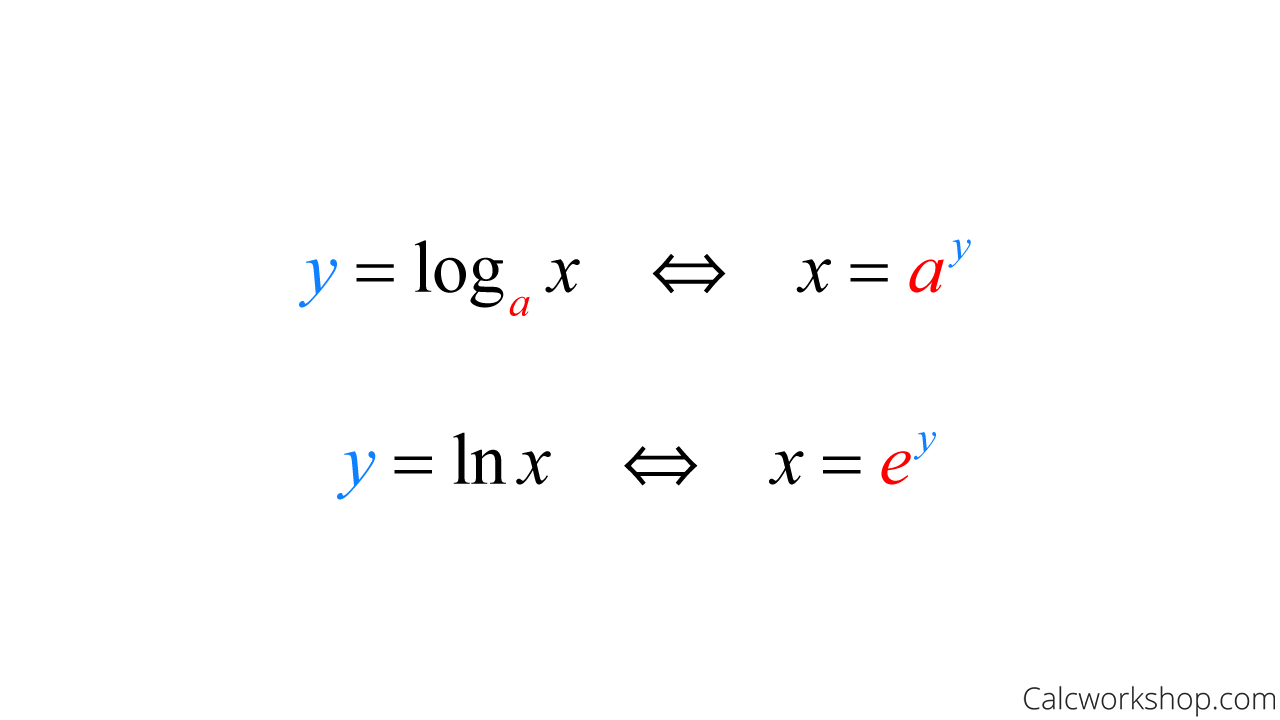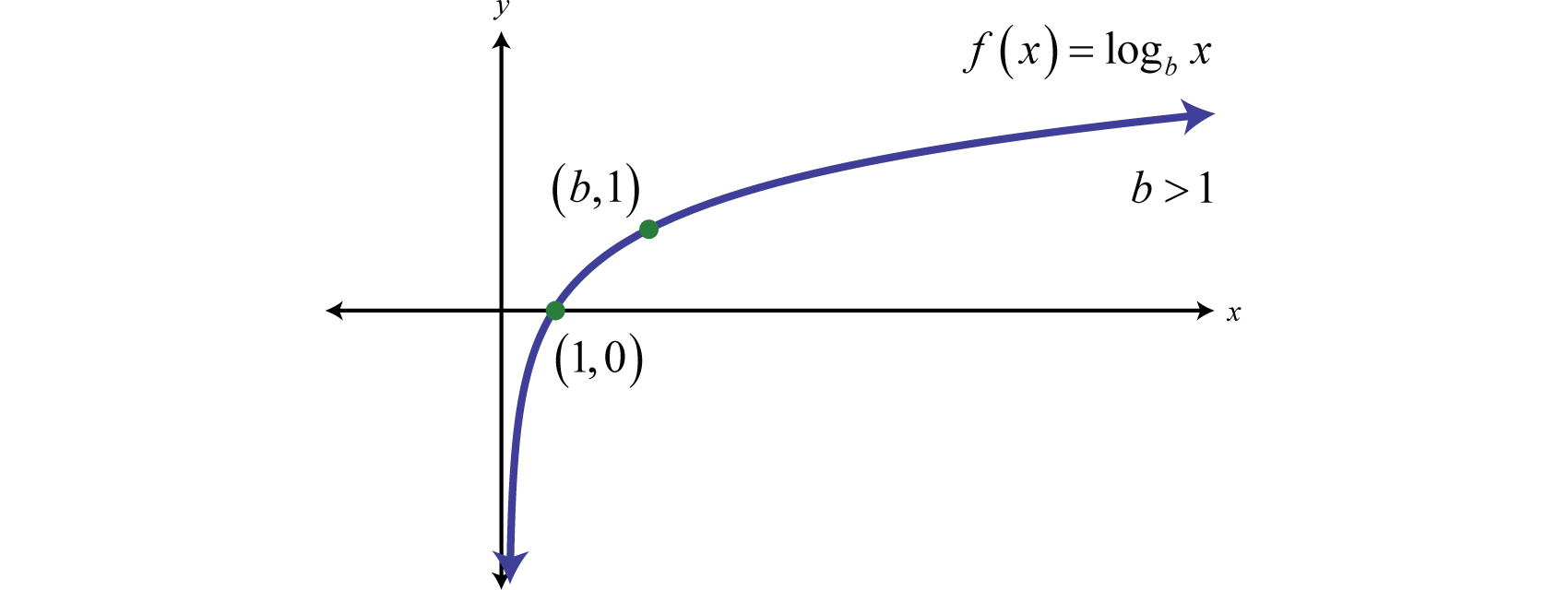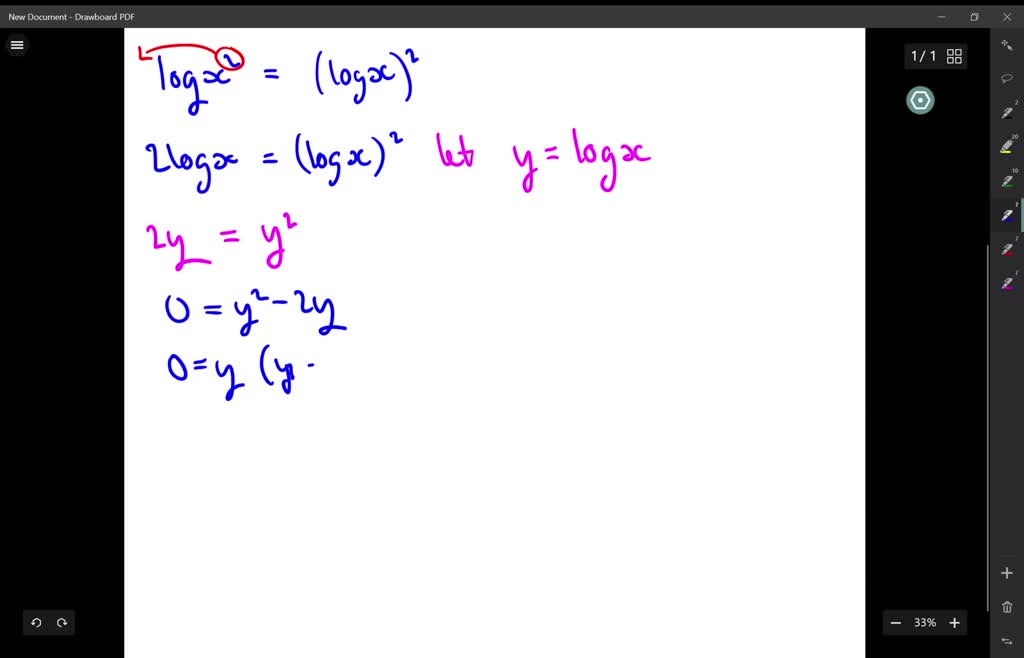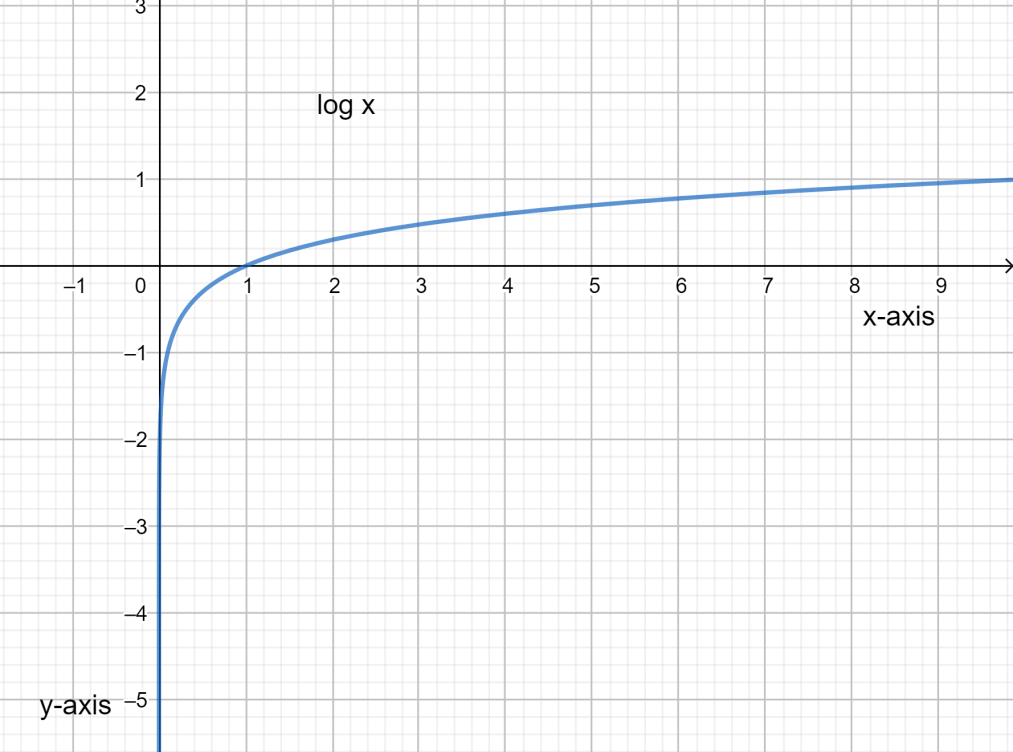
Logarithm Introduction What is Logarithm, Rules, Functions & Examples Cuemath
A logarithm is defined as the power to which a number must be raised to get some other values. It is the most convenient way to express large numbers. A logarithm has various important properties that prove multiplication and division of logarithms can also be written in the form of logarithm of addition and subtraction.

Logarithmic Function Formula
log(x) Natural Language; Math Input; Extended Keyboard Examples Upload Random. Compute answers using Wolfram's breakthrough technology & knowledgebase, relied on by millions of students & professionals. For math, science, nutrition, history, geography, engineering, mathematics, linguistics, sports, finance, music…

Logarithmic Functions and Their Graphs
4 Answers. By definition, the log − log − function is the inverse of the exponential function. It means that, if f: R →R+ f: R → R + such that, f(f−1(x)) = x. f ( f − 1 ( x)) = x. We then define f−1 f − 1 as f−1(x) =loga x f − 1 ( x) = log a x. So, f(f−1(x)) = x ⇔ aloga x = x. f ( f − 1 ( x)) = x a log a x = x.

Ex 5.5, 7 Differentiate the function (log x)^x + x^log x
Definition of a logarithm Generalizing the examples above leads us to the formal definition of a logarithm. log b ( a) = c b c = a Both equations describe the same relationship between a , b , and c : b is the base , c is the exponent , and a is called the argument . A helpful note

04 Solving Logarithmic Equations Part 1 Equations with Log(x) YouTube
Free Logarithms Calculator - Simplify logarithmic expressions using algebraic rules step-by-step

a^log x base a=x a^log x base a proof logarithm YouTube
Sometimes a logarithm is written without a base, like this: log (100) This usually means that the base is really 10. It is called a "common logarithm". Engineers love to use it. On a calculator it is the "log" button. It is how many times we need to use 10 in a multiplication, to get our desired number. Example: log (1000) = log10(1000) = 3.

Ex 5.7, 9 Find second order derivatives of log (log x)
k+1) with ∂f(x k+1) = A⊤log Ax k+1 b M k+1 = G(x k+1)−1 with inverse metric tensor as listed in Table1 x k+1 = exp x k (τv k) Increment k←k+ 1. Unlike monotone strategies that strictly ensure a decrease in the sequence of function values (f(x k)) k∈N with each iteration, this approach does not require f(x k+1) Log exponent rule states that log base b of a x is equal to x times log base b of a i.e., log b a x = x log b a. 12. What is the Key Difference between Common Log and Natural Log? The key difference between common and natural log is that common logs use base 10, while natural logs use the mathematical constant 'e' as their base. 13. Logarithm definition When b is raised to the power of y is equal x: b y = x Then the base b logarithm of x is equal to y: log b ( x) = y For example when: 2 4 = 16 Then log 2 (16) = 4 Logarithm as inverse function of exponential function The logarithmic function, y = log b ( x) is the inverse function of the exponential function, x = by logarithm, the exponent or power to which a base must be raised to yield a given number. Expressed mathematically, x is the logarithm of n to the base b if bx = n, in which case one writes x = log b n. For example, 2 3 = 8; therefore, 3 is the logarithm of 8 to base 2, or 3 = log 2 8. In the same fashion, since 10 2 = 100, then 2 = log 10 100. In mathematics, the logarithm is the inverse function to exponentiation. That means that the logarithm of a number x to the base b is the exponent to which b must be raised to produce x. For example, since 1000 = 103, the logarithm base 10 of 1000 is 3, or log10 (1000) = 3. Logarithmic Functions. Like many types of functions, the exponential function has an inverse. This inverse is called the logarithmic function. logax = y means ay = x. where a is called the base; a > 0 and a≠1. For example, log232 = 5 because 25 = 32. log5 = - 3 because 5-3 = . To evaluate a logarithmic function, determine what exponent the. Product Formula of logarithms The product formula of logs is, log b (xy) = log b x + log b y. Derivation: Let us assume that log b x = m and log b y = n. Then by the definition of logarithm, x = b m and y = b n. Then xy = b m × b n = b m + n (by a law of exponents, a m × a n = a m + n) Converting xy = b m + n into logarithmic form, we get This is the Logarithmic Function: f (x) = log a (x) a is any value greater than 0, except 1 Properties depend on value of "a" When a=1, the graph is not defined Apart from that there are two cases to look at: Plot the graph here (use the "a" slider) In general, the logarithmic function: always has positive x, and never crosses the y-axis What is the Derivative of log x? The derivative of logₐ x (log x with base a) is 1/ (x ln a). Here, the interesting thing is that we have "ln" in the derivative of "log x". Note that "ln" is called the natural logarithm (or) it is a logarithm with base "e". i.e., ln = logₑ. Logarithms, like exponents, have many helpful properties that can be used to simplify logarithmic expressions and solve logarithmic equations. This article explores three of those properties. Let's take a look at each property individually. The product rule: log b ( M N) = log b ( M) + log b ( N)
Solving Logarithmic Equations YouTube

SOLVEDSolve each logarithmic equation. logx^2=(logx)^2

Misc 7 Differentiate (log x) log x Chapter 5 Class 12 Miscellane

Draw the graph of \\log x

Solving the Logarithmic Equation (logx)^2 6*logx = 7 YouTube

Chapter 06 Exponential and Logarithmic Functions Core Vocabulary Gianna in Algebra 2 part 2

Ex 5.5, 7 Differentiate the function (log x)^x + x^log x

How To Solve For x. Logarithmic Equations YouTube

Ex 5.5, 7 Differentiate the function (log x)^x + x^log x